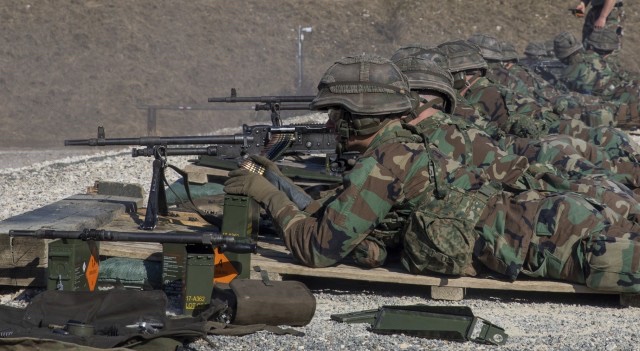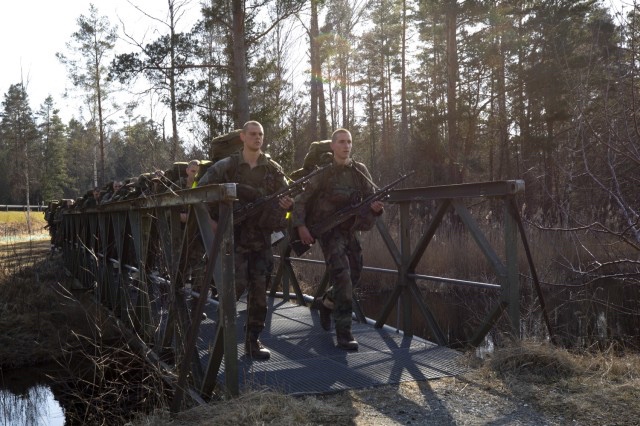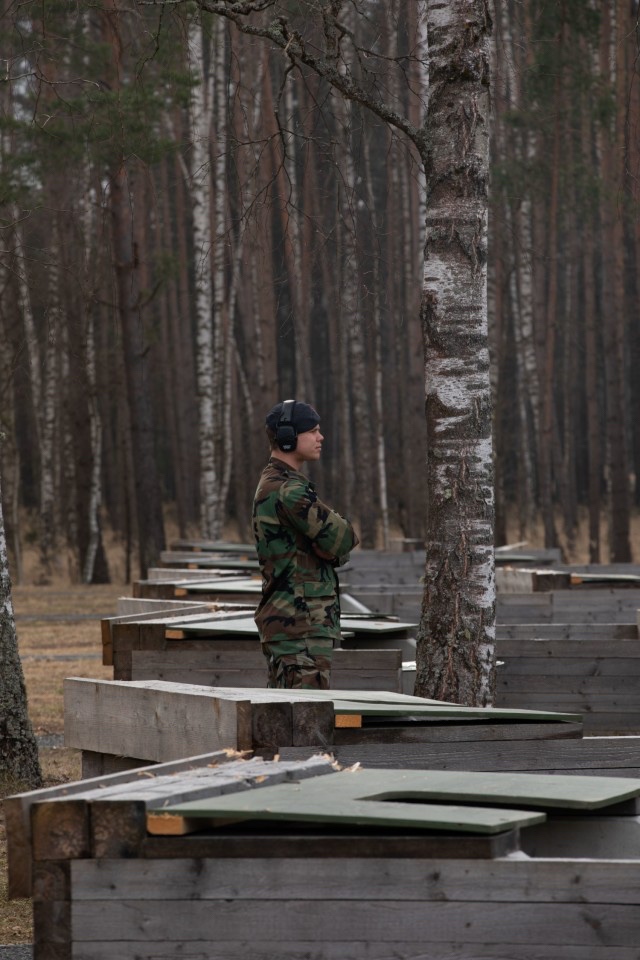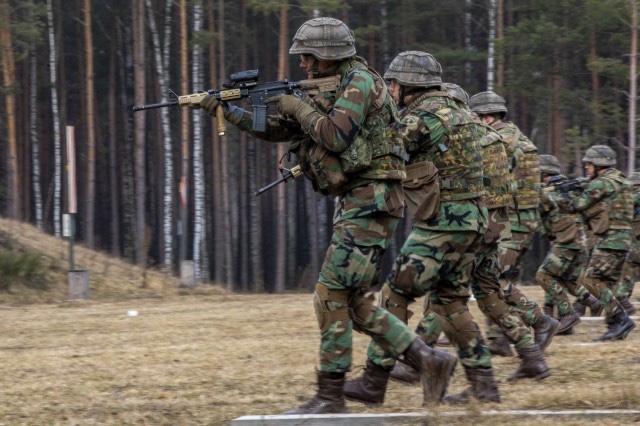GRAFENWOEHR TRAINING AREA, Germany – It is a commitment not to be taken lightly. The choice to become a Royal Dutch Marine is more than committing oneself to a new job – it’s committing to a new way of life.
“It was a lot harder than I thought it was going to be,” admitted Marine 2nd class Collins. Collins, born to a Dutch mother and an American father, followed in the footsteps of his father who served in the United States Army. “I was looking for the biggest challenge I could find, and I was looking for an exciting job, and I found both.”
Collins said that waking up early, not always getting enough food or sleep, combined with the rigors of physical training, initially made adjustment to military life a challenge.

“The Dutch Marines are known for their arduous training programs, which are primarily focused around hardship,” said 1LTC van Haaren. Enlisted Marines must complete two phases to become a Royal Dutch Marine. Part of the second phase takes place at Grafenwoehr, Germany, because according to van Haaren, the Netherlands lacks live-fire ranges. This phase is initial tactical training, and consists of 15 weeks of rigorous training, which is demanding both physically and mentally.
At the completion first phase, only half of the enlisted hopefuls will pass.
The speed march is an example of one of the more challenging physical and mental events for prospective Royal Dutch Marines. The Marines ran carrying rucksacks weighing approximately 40 pounds, in addition to weapons (the Colt C7 and switching off the general-purpose machine gun FM MAG 7.62). The speed march was five miles long and completed in under just 50 minutes.

The reason for the demanding nature of training is simple – to fashion the Marines into their most strong and capable selves, and to ensure only the most resolute of them make it to the Royal Dutch Marine Corps.
“Once you’re in, it’s usually for life,” said van Haaren, who himself plans to make a career of the Royal Dutch Marines.
According to van Haaren, the Royal Dutch Marine Corps specializes in carrying out special maritime operations, amphibious landings, and expeditionary land operations with light infantry units. They can be deployed for long periods of time, under all climatological and geographical circumstances. As sea soldiers, they deploy from Royal Netherlands Navy ships to carry out amphibious landings. On the ground, the Royal Dutch Marines must be capable of sustaining their own survival for up to 72 hours with zero support.
For that reason, both phases of training must be intense.

On the ranges of Grafenwoehr Training Area, equipped with Colt C7s, the Marines practice fire and movement drills which consist of individual and platoon movements. The Marines also work in pairs to train on their general-purpose machine gun, the 7.62 FN MAG, with one Marine reloading and signaling to the firer when to shoot. The ability to do this requires a great deal of teamwork, discipline, and situational awareness.
The practice of live fire could be potentially unnerving for some, but for the right few, the process can be invigorating.
“I really enjoyed the shooting drills,” said Collins, with a grin. “Probably one of my favorite things to do.” Collins had never shot prior to enlisting.

After their time in Grafenwoehr, the Marines will return to the Netherlands and continue their second phase of training. It takes place at the Mariniers Opleidings Centrum at the Van Ghentkazerne in Rotterdam. During this time, the Marines execute multiple land and amphibious validation operations. Fresh challenges will await them, with more demands on their bodies and minds.
For Collins, these demands are worth it. He motivates himself by thinking of his father, who he wants to make proud, and by avowing to himself to finish what he started.
“Being a Marine, to me, means to keep going where others might quit,” said Collins. “To always help the guy to the left and right of you, and to help the less fortunate around the world.”
Once both phases of training are successfully completed, van Haaren said the Marines will receive their “dark blue beret”. From there, they will be assigned at last to the operational units of the Royal Dutch Marine Corps. Their training will be complete, but their real journey and the rest of their lives, will have just begun.
Learn more about the Grafenwoehr Training Area at: www.7atc.army.mil
By SPC Elizabeth MacPherson


Great article. It’s always highly motivating to see stuff like this. The woodland cammies bring back a lot of memories.
Recruiting = you can be based in ARUBA-BONAIRE-CURACAO.